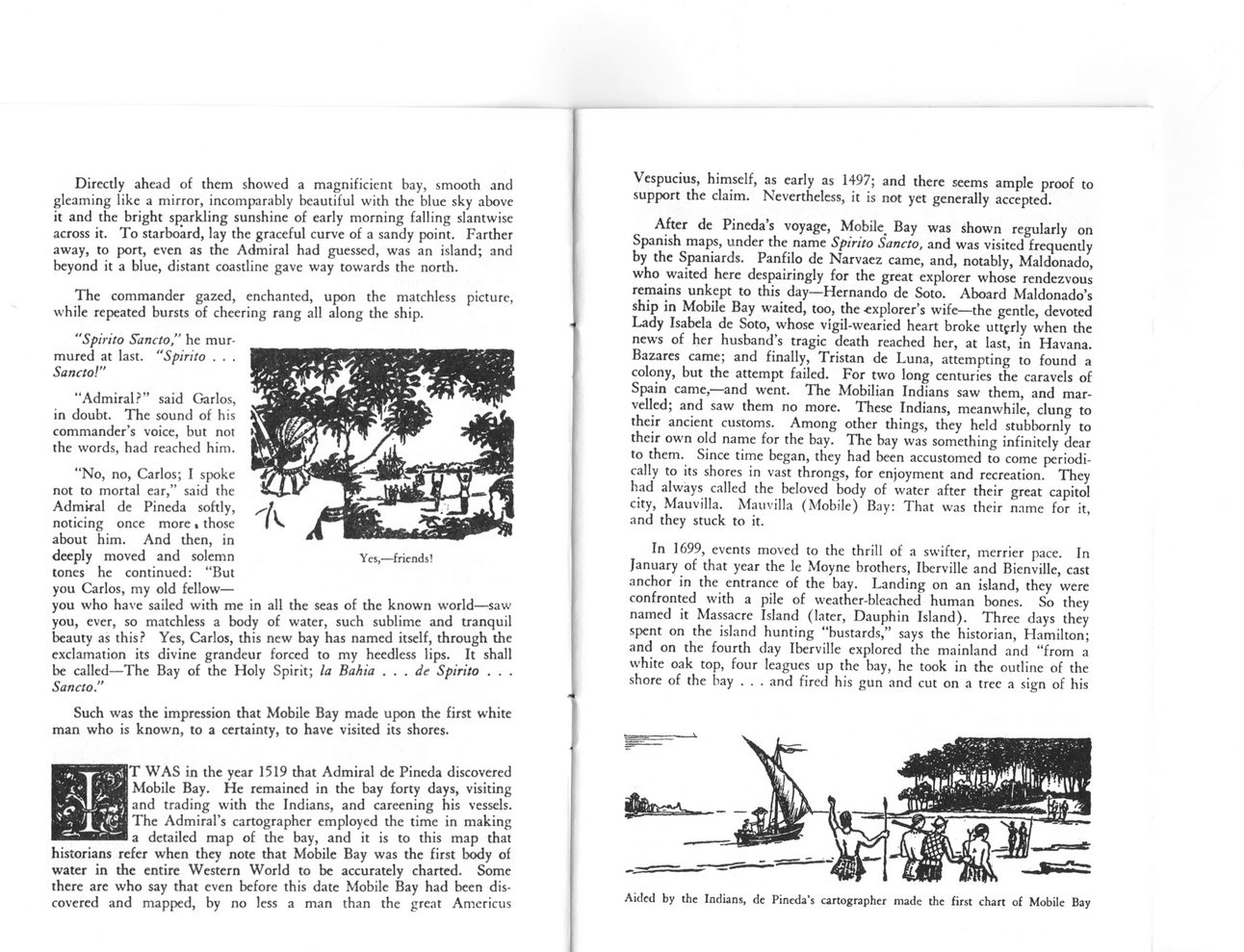This text was obtained via automated optical character recognition.
It has not been edited and may therefore contain several errors.
Directly ahead of them showed a magnificient bay, smooth and gleaming like a mirror, incomparably beautiful with the blue sky above it and the bright sparkling sunshine of early morning falling slantwise across it. To starboard, lay the graceful curve of a sandy point. Farther away, to port, even as the Admiral had guessed, was an island; and beyond it a blue, distant coastline gave way towards the north. The commander gazed, enchanted, upon the matchless picture, while repeated bursts of cheering rang all along the ship. "Spirito Sanetoi? he murmured at last. ?Spirito . . . Sancto!" ?Admiral?? said Garlos, in doubt. The sound of his commander?s voice, but not the words, had reached him. ?No, no, Carlos; I spoke not to mortal ear,? said the Admiral de Pineda softly, noticing once more > those about him. And then, in deeply moved and solemn Yes,?friends! tones he continued: ?But you Carlos, my old fellow? you who have sailed with me in all the seas of the known world?saw you, ever, so matchless a body of water, such sublime and tranquil beauty as this? Yes, Carlos, this new bay has named itself, through the exclamation its divine grandeur forced to my heedless lips. It shall be called?The Bay of the Holy Spirit; la Bahia . . . de Sptrito . . . Sancto." Such was the impression that Mobile Bay made upon the first white man who is known, to a certainty, to have visited its shores. T WAS in the year 1519 that Admiral de Pineda discovered Mobile Bay. He remained in the bay forty days, visiting and trading with the Indians, and careening his vessels. The Admiral?s cartographer employed the time in making a detailed map of the bay, and it is to this map that historians refer when they note that Mobile Bay was the first body of water in the entire Western World to be accurately charted. Some there are who say that even before this date Mobile Bay had been discovered and mapped, by no less a man than the great Americus Vespucius, himself, as early as 1497; and there seems ample proof to support the claim. Nevertheless, it is not yet generally accepted. After de Pineda?s voyage, Mobile. Bay was shown regularly on Spanish maps, under the name Spirito Sancto, and was visited frequendy by the Spaniards. Panfilo de Narvaez came, and, notably, Maldonado, who waited here despairingly for the great explorer whose rendezvous remains unkept to this day?Hernando de Soto. Aboard Maldonado?s ship in Mobile Bay waited, too, the -explorer?s wife?the gentle, devoted Lady Isabela de Soto, whose vigil-wearied heart broke utterly when the news of her husband?s tragic death reached her, at last, in Havana. Bazares came; and finally, Tristan de Luna, attempting to found a colony, but the attempt failed. For two long centuries the caravels of Spain came,?and went. The Mobilian Indians saw them, and marvelled; and saw them no more. These Indians, meanwhile, clung to their ancient customs. Among other things, they held stubbornly to their own old name for the bay. The bay was something infinitely dear to them. Since time began, they had been accustomed to come periodically to its shores in vast throngs, for enjoyment and recreation. They had always called the beloved body of water after their great capitol city, Mauvilla. Mauvilla (Mobile) Bay: That w>as their name for it, and they stuck to it. In 1699, events moved to the thrill of a swifter, merrier pace. In January of that year the le Moyne brothers, Iberville and Bienville, cast anchor in the entrance of the bay. Landing on an island, they were confronted with a pile of weather-bleached human bones. So they named it Massacre Island (later, Dauphin Island). Three days they spent on the island hunting ?bustards,? says the historian, Hamilton; and on the fourth day Iberville explored the mainland and ?from a white oak top, four leagues up the bay, he took in the outline of the shore of the bay . . . and fired his gun and cut on a tree a sign of his Aided by the Indians, de Pineda's cartographer made the first chart of Mobile Bay

Alabama Point-Clear-Cavalcade-04